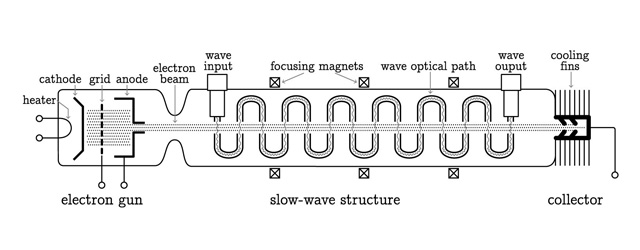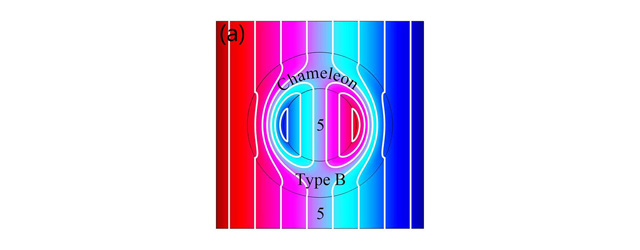Accueil
Exploiting Slow Light for Stimulated Brillouin Scattering (Vol. 50, No. 3)

Stimulated Brillouin scattering (SBS) is an important third-order nonlinear process. The main challenge of utilizing SBS in silicon photonic waveguides is that the SBS gain coefficient is too weak to generate efficient power conversion between optical waves and acoustic waves.
In a recent study, the authors show how to improve the SBS process in a periodic suspended silicon waveguide by exploiting the slow light characteristic. They focus on tuning the structural parameters and working wavelength of the device to exploiting the resonance enhancement effect to amplify the weak SBS phenomenon. The calculated SBS gain coefficient is shown to be in the order of 106 W-1m-1. They also prove the feasibility of the device design using standard silicon-on-insulator wafers. The slow-light waveguide provides a powerful platform for light-sound interaction through SBS process.
Y. Xu, L. Zhou, L. Lu, J. Chen, and B. M. A. Rahman, Enhanced forward stimulated Brillouin scattering in silicon photonic slot waveguide Bragg grating, J. Phys. D: Appl. Phys. 52, 184001 (2019)
[Abstract]
A Liquid-Lithium Target for Nuclear Physics (Vol. 50, No. 3)

A liquid-lithium target (LiLiT) bombarded by a 1.5 mA, 1.92 MeV proton beam from the SARAF superconducting linac acts as a ~30 keV quasi-Maxwellian neutron source via the 7Li(p,n) reaction with the highest intensity (5×1010 neutrons/s) available to date. We activate samples relevant to stellar nucleosynthesis by slow neutron capture (s-process). Activation products are detected by α, β or γ spectrometry or by direct atom counting (accelerator mass spectrometry, atom-trap trace analysis). The neutron capture cross sections, corrected for systematic effects using detailed simulations of neutron production and transport, lead to experimental astrophysical Maxwellian averaged cross sections (MACS). A parallel effort to develop a LiLiT-based neutron source for cancer therapy is ongoing, taking advantage of the neutron spectrum suitability for Boron Neutron Capture Therapy (BNCT) and the high neutron yield available.
M. Paul and 16 co-authors, Reactions along the astrophysical s-process path and prospects for neutron radiotherapy with the Liquid-Lithium Target (LiLiT) at the Soreq Applied Research Accelerator Facility (SARAF), Eur. Phys. J. A 55, 44 (2019)
[Abstract]
Traveling-wave tubes: The unsung heroes of space exploration (Vol. 50, No. 3)

An invention from the 1950s is still being used today
What do televisions and space exploration have in common? No, we’re not talking about a cheesy physics joke; rather, this is the story of an often-overlooked piece of equipment that deserves a place in the annals of telecommunication history. Some would argue that the traveling-wave tube (TWT) has not received the recognition it deserves when it comes to the history of space travel and communications – until now. A group of researchers has published recently a work looking into the history of TWTs. This is the first time a paper aimed at the general public has described the vital role of this technology in various areas of development. The team collected and read hundreds of papers on the history and evolution of the traveling-wave tube. First introduced in the 1950s, a TWT is a relatively simple piece of equipment used for transmitting data across long distances, including the vast expanses of space.
D.F.G. Minenna, F. Andre, Y. Elskens, J.-F. Auboin, F. Doveil, J. Puech and E. Duverdier (2019), The traveling-wave tube in the history of telecommunication, Eur. Phys. J. H 44, 1 (2019)
[Abstract]
Intelligent metamaterials behave like electrostatic chameleons (Vol. 50, No. 3)

A chameleon can flexibly change its colour to match its surroundings. And a similar phenomenon can now be seen in a new class of smart materials called metamaterials. The trouble is that these metamaterials lack the ability to respond to nearby objects due to their physical characteristics. To remedy this shortcoming, the authors have developed so-called 'metashells': hollow shells made of metamaterials and capable of carrying materials in their core. The advantage is that their physical characteristics, such as permittivity--the extent to which a material can store charge within an electrical field--change with the electromagnetic properties of the material they contain. In a theoretical study published recently, they describe how they have developed an entire class of these chameleon-like metashells. These intelligent metashells could become an all-purpose material to satisfy different permittivity requirements under different conditions. The next stages will focus on experimental research, and on industrial applications.
L. Xu and J. Huang, Electrostatic chameleons: Theory of intelligent metashells with adaptive response to inside objects, Eur. Phys. J. B 92, 53 (2019)
[Abstract]







